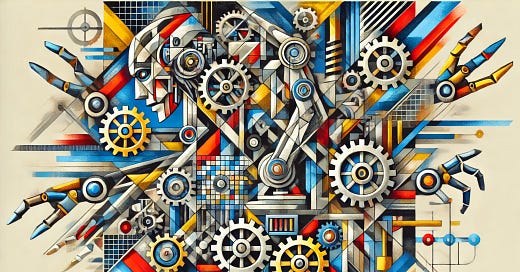NVIDIA releases the 'CUDA of physical AI' - a familiar company playbook applied to the coming robotics boom
After a much-needed two-week vacation (omg I was SO burnt out last month!!) I am recharged and ready to keep reporting on the never-ending, fast-moving AI news.
My first piece for Fortune in 2025? It’s fitting that it’s big news from NVIDIA, nearly two years after my deep dive on how NVIDIA came to dominate AI in February 2023, while I was at VentureBeat (a piece that came out just before the company’s massive stock boom).
NVIDIA released a boatload of news at the Consumer Electronics Show (CES) yesterday, but I was most interested in Cosmos — a new AI platform to dominate the ‘ChatGPT moment’ in robotics. The models are specifically designed to work together with NVIDIA’s simulation technology and drive breakthroughs in physical AI systems like self-driving cars and robots.
Here’s why the news is key: NVIDIA has made billions selling the picks and shovels powering the generative AI gold rush. Demand for NVIDIA’s specialized chips, called GPUs, has boomed, sending the company’s stock soaring nearly 11-fold in two years.
But NVIDIA knows it can’t just ride today’s AI wave forever, selling GPUs for tens of thousands of dollars each. It must help create the next wave.
That’s a familiar playbook for the company — create the tech which helps create the market — which famously created CUDA, software that made it easier for researchers to use the company’s GPUs, in 2007. Experts both inside and outside Nvidia say the move helped lead to the early AI and deep learning revolution of the 2010s. In 2019, Nvidia also debuted Megatron, an open source AI system that contributed to breakthroughs by companies in developing large language models, including OpenAI, by demonstrating techniques to train massive models and influencing AI advancements like the architecture underlying ChatGPT.
Cosmos is essentially the CUDA of AI: For my Fortune story, I spoke to Rev Lebaredian, vice president of Omniverse and simulation technology at Nvidia, who said that has no plans to sell its own robots and autonomous vehicles. “Nvidia is not going to create robots, we want to supply the computers and tooling and technology [others] need to build their robots,” he said. Instead, Nvidia has laid the groundwork for Cosmos by spending the last decade developing an ecosystem of AI software, hardware, simulation computers for robots and autonomous vehicles. What’s changed, he said, is that this new market is finally about to take off. “We believe that we will benefit if that market exists,” said Lebaredian. “In order for it to exist, we need to seed the ecosystem with all of the tools and give them a jump start.”
That is, just like NVIDIA did with CUDA and Megatron.
Read the full story here (yes, it’s paywalled! But my posts here on Substack are always free, so hope you’ll consider supporting my work at Fortune!)





The development tooling, as you emphasize, is crucial to Nvidia's ascent, as it was for MS. And the company profits from its efforts in that. Nvidia rides a tiger, but has been masterful as well as lucky. Looking at their "channels" and "alliances" as they unfold in 2025 should prove illuminating as the company looks to continue ascent. Happy New Year, Sharon!